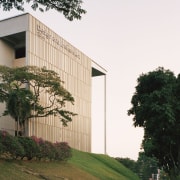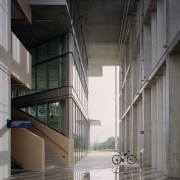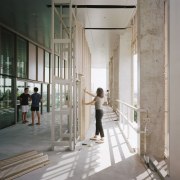Modern university architecture studio includes elements of vernacular tropical architecture in Southeast Asia
An innovative cooling system, 1225 solar photovoltaics and the sheer cleverness of the architecture make this the first new net-zero energy building in Singapore
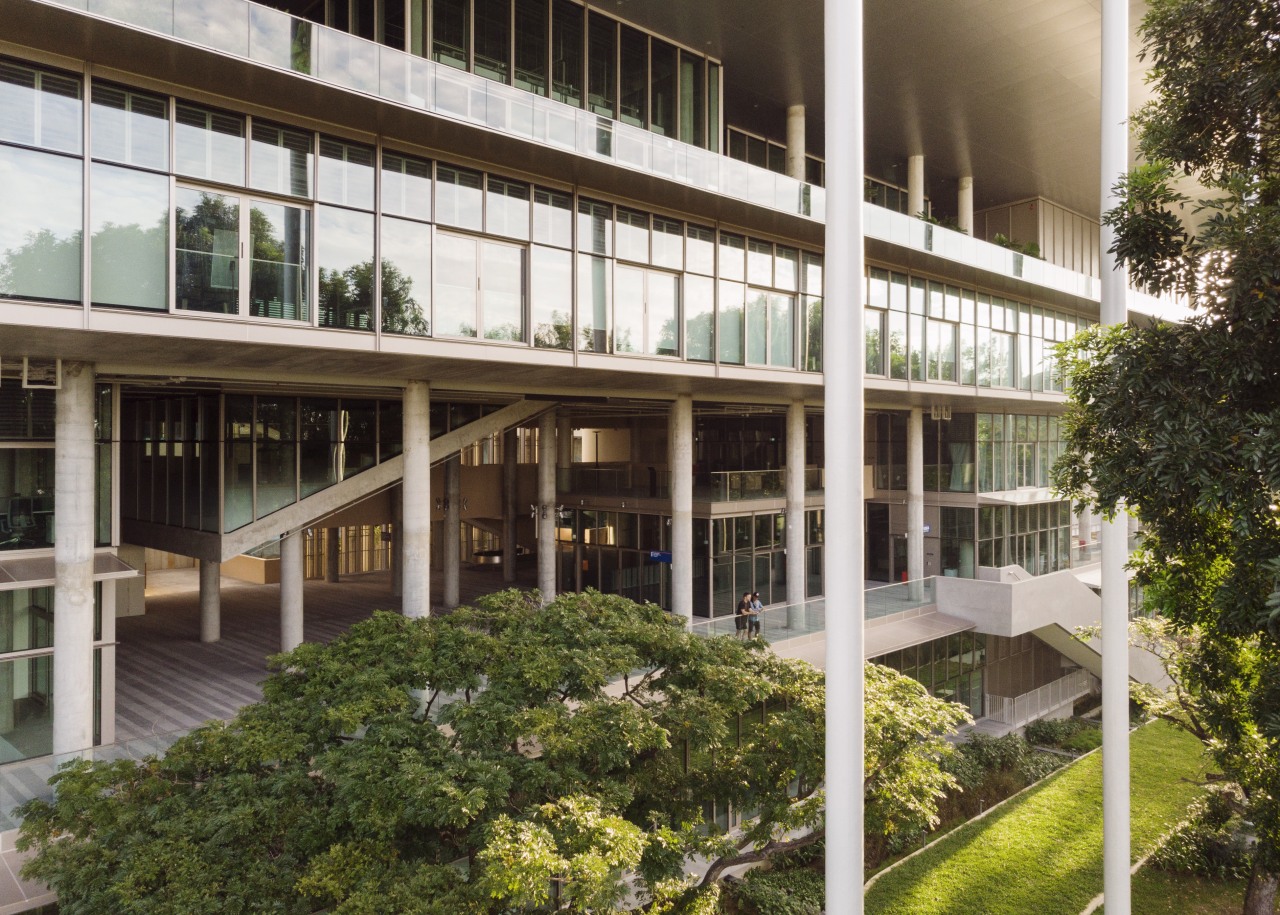
When the School of Design and Environment at the National University of Singapore required a new building, it made logical, pedagogical, and financial sense to design one that walks the talk in terms of green architecture. The result? A living laboratory that demonstrates human-centric approaches for integrated sustainable development.
Standing six-storeys tall, SDE4 makes an apt awareness project for the School, an institutional organization that promotes design, sustainability and education in Southeast Asia. And that’s partly because SDE4 is the first new-build, net-zero energy building in Singapore. The modern building presents a 8500m², multidisciplinary space, designed by Serie + Multiply Architects with Surbana Jurong.
Located on a hillside along Clementi Road near the southern coastline of Singapore, SDE4 is a new addition to the Design & Environment precinct and part of a wider campus redevelopment. The climate-responsive building includes more than 1500m² of design studio space; a 500m² open plaza; a wide variety of public and social spaces; workshops and research centres; as well as a new cafe and library.
The building’s flexible design and high efficiency reflect the School’s ambition of promoting new forms of teaching spaces as a scaffold for research. Rooms are designed in a variety of sizes to allow flexible rearrangement of layout for exhibitions, school installations and future change of use.
SDE4 now forms an integral part of the campus, says Lam Khee Poh, dean of the School of Design and Environment.
“Buildings are not isolated entities – grouped, they form a neighbourhood, supporting community activities that are crucial for all educational institutions,” says Lam.
“Our students and faculty get the opportunity to learn both inside and outside the classroom, being engaged in an integrated process of designing, developing, constructing, and operating ultra modern buildings that in turn, influence the students’ own behaviour when they occupy them.”

Awarded to Serie + Multiply Architects with Surbana Jurong through an international design competition launched in 2013, the building was envisioned as porous architecture structured in a juxtaposition of ‘platforms and boxes’ that express its programmatic content.
Christopher Lee, principal of Serie Architects, says that one of the firm’s aims when it started the project was to challenge the idea that a high energy efficient building has to also be an opaque one.
“Instead, we envisioned a very transparent volume in which the outside and the inside spaces are ambiguous; where nature and landscape play an important part as a backdrop to the building.”
To an extent responding to this, the design revisits the principles of everyday tropical architecture in Southeast Asia. More than 50% of the total area is naturally ventilated and most of the rooms can be opened to prevailing breezes. Air-conditioning is used only when needed, while the cross-ventilated spaces between cooled volumes act as thermal buffers, emulating traditional tropical verandas.
As a result, the building is punctuated by alternating terraces, landscaped balconies and informal spaces. There are no formal boundaries between places to study, work and socialise in. And as part of this, SDE4’s large, open platforms are configured to promote interaction and visual connectivity.
“Circulation corridors and flights of stairs link and penetrate these platforms, allowing spaces to bleed from one learning and research space to another, fostering a collaborative design ethos,” says Lee.
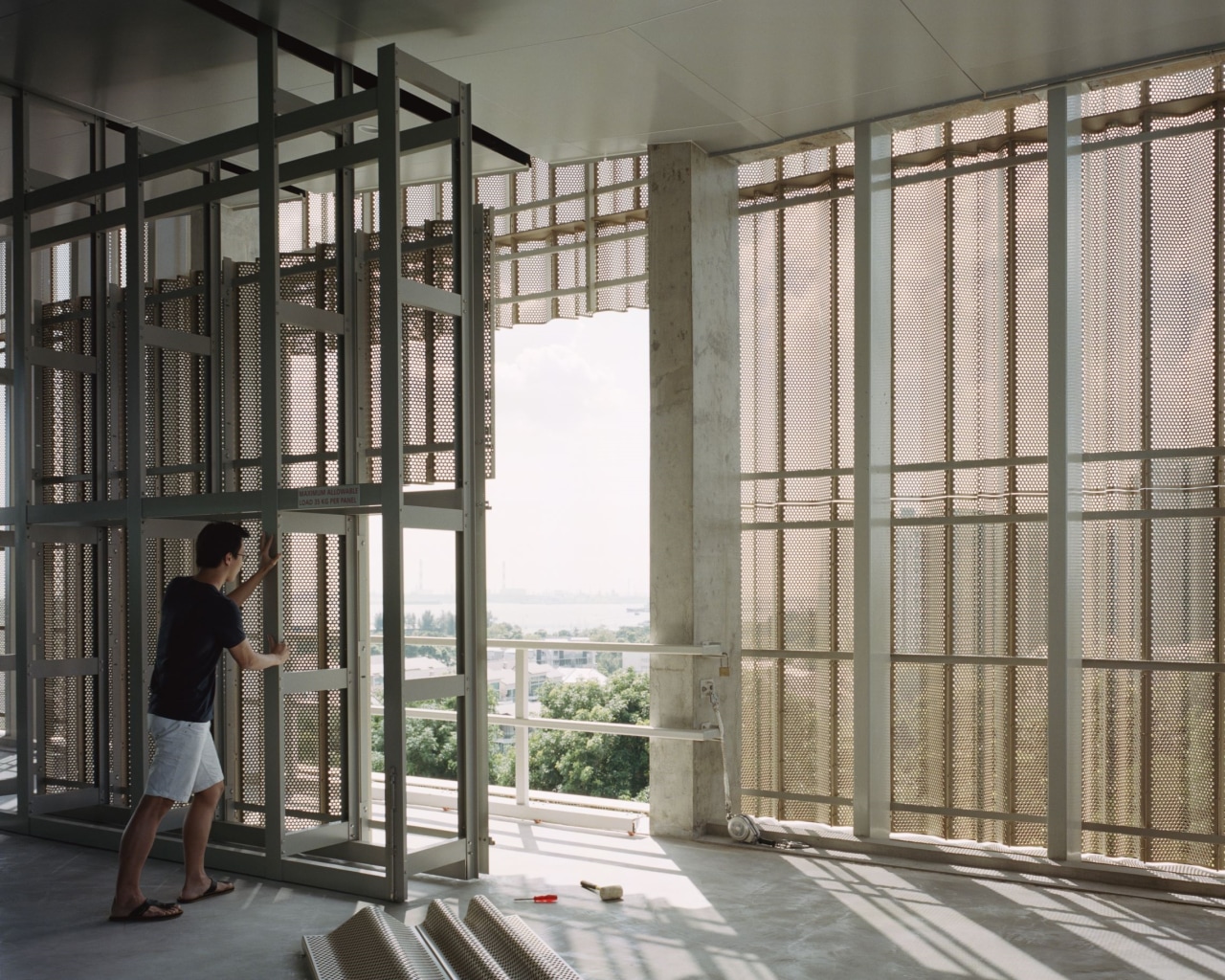
“So, the building serves as a canvas for test-bedding and developing green building technology – effectively, becoming a living laboratory.”
Another key aspect of the architecture that helps dictate the free-flowing nature of the interiors is the large over-sailing roof. This protrudes along the south elevation sheltering a giant open-air tropical portico and is built around and over existing mature trees. This openness allows spaces to flow freely across the length of the building, bringing the surrounding landscape into close proximity with the interior spaces. The east and west facades are designed as veils – aluminium curtains that filter sunlight and further connect to the surroundings.
And links to the outdoors are fundamental in another way, too – the south gardens are integral to the teachings offered by the biophillic building.
“Designed as a natural purification system, the landscape improves water quality while encouraging healthy lifestyle activities and teaching around water,” says Lee. “Runoff from the roof and hard scape is cleansed by passing through soil, which removes sediments and soluble nutrients.
“Half the plants selected are native species and most are from the southern tropics, a choice that also provides chance for environmental education.”
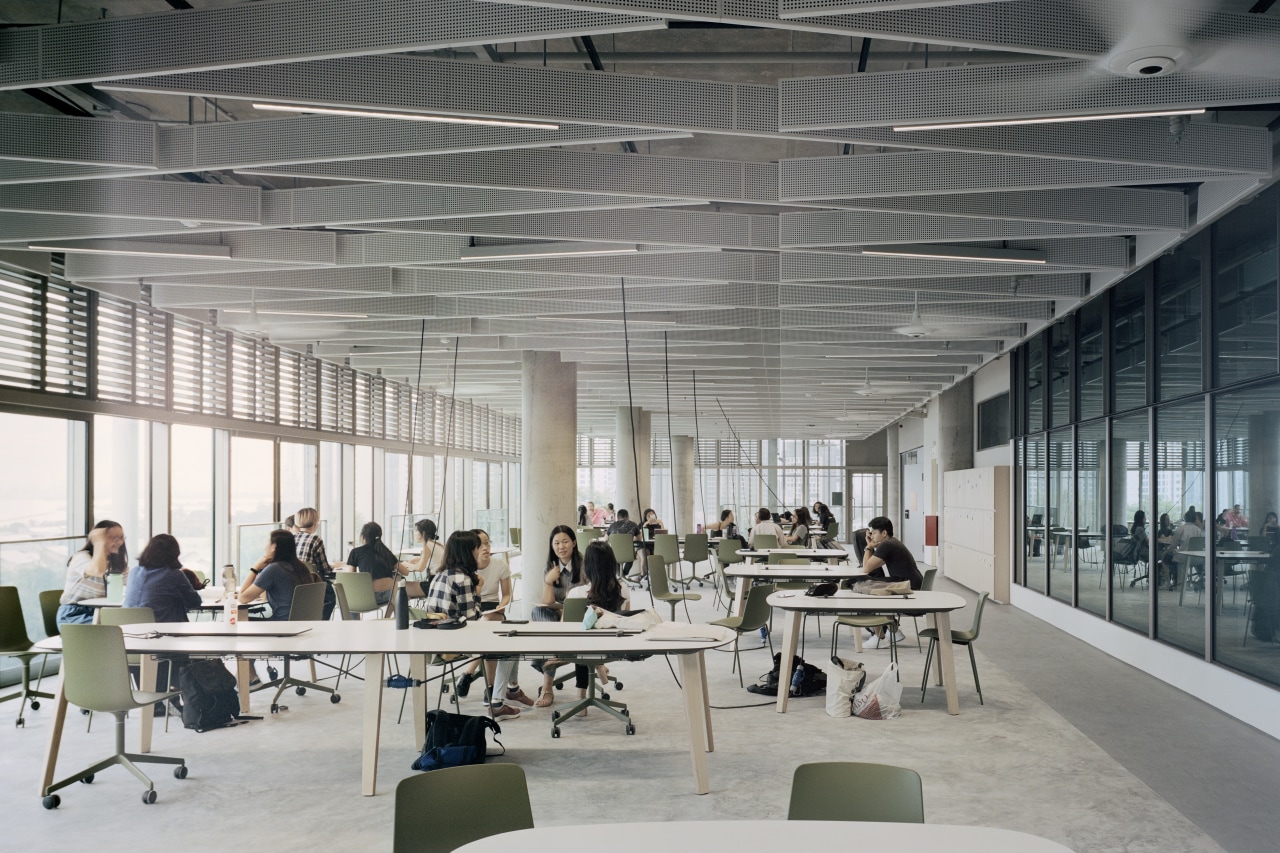
Last but surely not least, SDE4 is designed to be climate responsive with net-zero energy, thanks largely to a range of sustainable design features and the 1200 solar photovoltaic panels on its roof.
“SDE4 exceeds set standards of health and wellbeing – creating new avenues for delivering comfort in the tropics, embracing an innovative hybrid cooling system that supplies rooms with 100% fresh pre-cooled air and augments this with an elevated air speed, generated by ceiling fans,” says Lee. “This cool circulating air creates a comfortable condition in a highly energy-efficient system.”
Giovanni Cossu, senior manager at the School of Design and Environment, says the main story of SDE4 is how to achieve net-zero through design.
“This building challenges the negative perception of spatial quality, comfort, and cost for sustainable buildings. SDE4 counters the argument that green buildings cost more, as it has limited or no extra cost compared to similar, industry-standard models.
“Preliminary results of subjective surveys completed by occupants show high user acceptance levels of the environmental conditions offered by the building,” says Cossu. “Thanks in part to such occupant accolades, SDE4 speaks to multiple audiences: occupants and users, as well as policy makers and developers. And this generates a level of significance that cannot be ignored.”
Credit list
Project
Executive architect, mechanical & electrical engineer, civil & structural engineer, quantity surveyor
Engineering and hybrid cooling system
Design architect
infrastructure and urban development
Cladding
Story by: Charles Moxham
Photography by: Rory Gardiner
Home kitchen bathroom commercial design
Diving into nature
Classic looks, contemporary efficiency
Personality plus
Commercial Design Trends Vol. 35/1C
A new commercial office building can sometimes be more than just a place to work – it can also be an integral component ...
Read More



